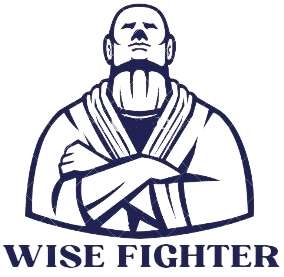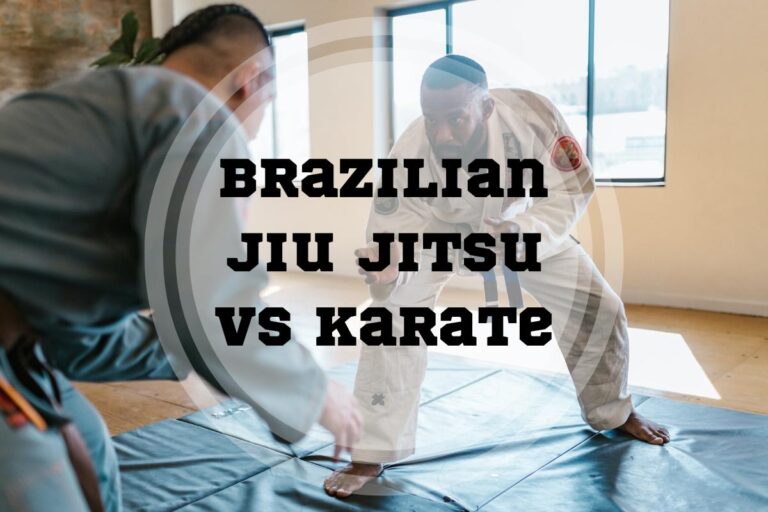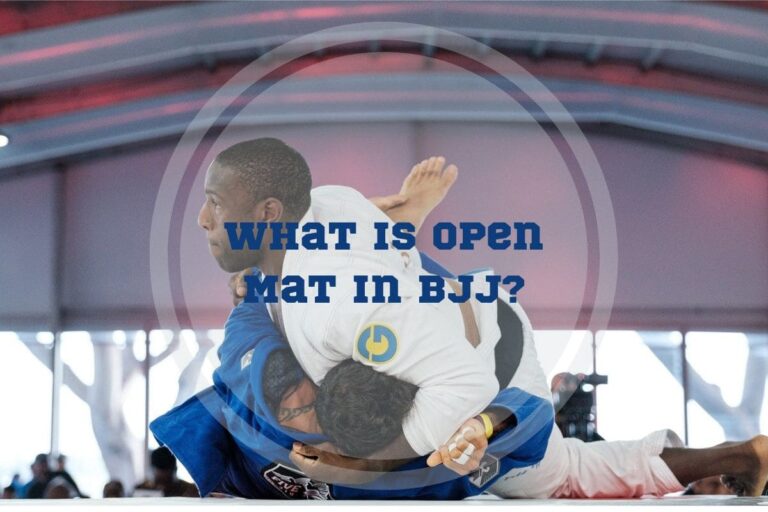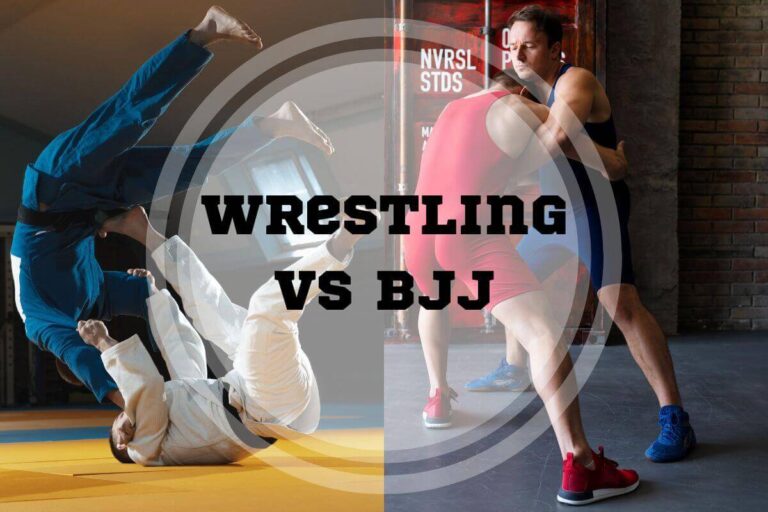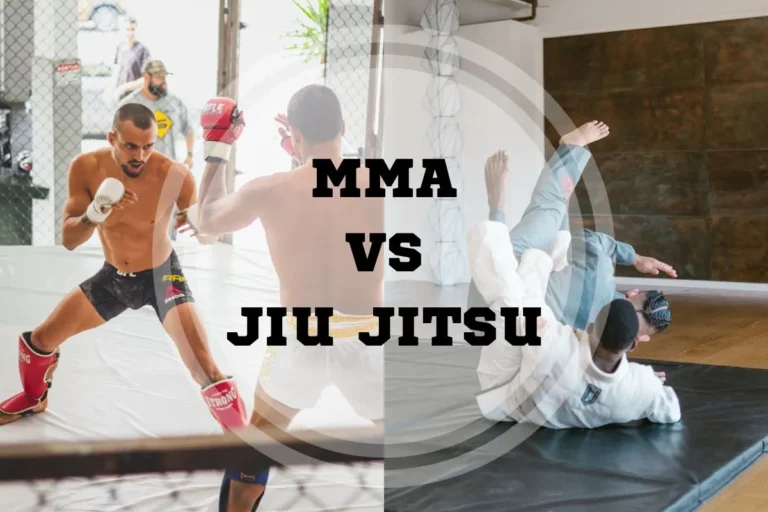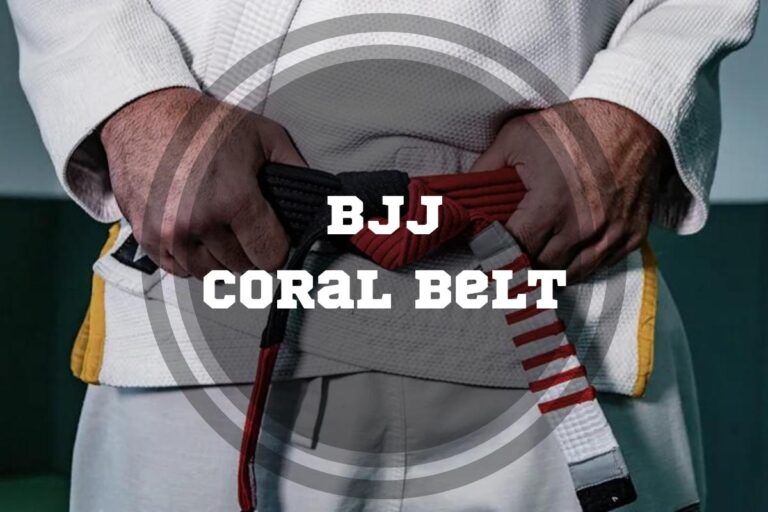BJJ White Belt Stripes: The First Steps in Your Jiu Jitsu Journey
Have you ever wondered about those little stripes on a BJJ practitioner’s white belt? Well, if you’re just getting familiar with the world of Brazilian Jiu Jitsu, “BJJ white belt stripes” may sound like a way to decorate your belt. That assumption is reasonable, but it couldn’t be farther from the truth.
Think of a newbie at the gym, figuring out the difference between dumbbells and kettlebells – they’re happy and proud to figure out what each of these is and how to use them. Now, if you’re a newbie at Jiu Jitsu, these stripes are similar to what a gym newbie experiences when they learn something new; it’s a pat on the back of sorts, a way for the instructor to tell you, “Good job, you did something right!”
But what’s the deal with these stripes and how exactly do you earn them? How many stripes can there be on a white belt in BJJ?
That’s what we’re going to figure out today! We’ll go into depth on the mystery behind the BJJ white belt stripes and why they’re so important.
Let’s dive in!
What are the BJJ white belt stripes?
They are recognition markers awarded to beginners in Brazilian Jiu Jitsu and show their progress and skill development.
White Belt in BJJ
The easiest way to explain what a white belt is would be to say “this is where you start from.” The white belt is the foundation, the level all beginners are at, which symbolizes their entry in the world of Brazilian Jiu Jitsu.
As the beginner starts to get more familiar with the culture and techniques behind BJJ, the white belt shows their evolution, and the stripes are awarded to show their progress and dedication.
You may now be thinking, “Hey, something’s not right here! I’ve seen the white belt before, and it had nothing to do with Brazilian Jiu Jitsu!” You’re absolutely correct, the concept of the white belt isn’t restricted to just this martial art, and it has a relatively wide use.
Take karate, for example. The white belt, known as “shiro obi” in Japanese, also marks the beginning of a student’s journey. Similarly, it is the case for Taekwondo, where the white belt is worn by beginners and shows that they’re taking the first steps on their journey to Taekwondo mastery. Judo, another famous martial art, also uses the white belt to welcome its beginners as they go through the labyrinth of kyu grades before they get to the Dan levels of the black belt.
In addition, you may have heard the term “white belt” being used metaphorically in some weightlifting and fitness communities, but even there it symbolizes the beginning of a journey to mastering new techniques. In BJJ, though, it’s not just about the belt: the stripes on it show progress, perseverance, and dedication.
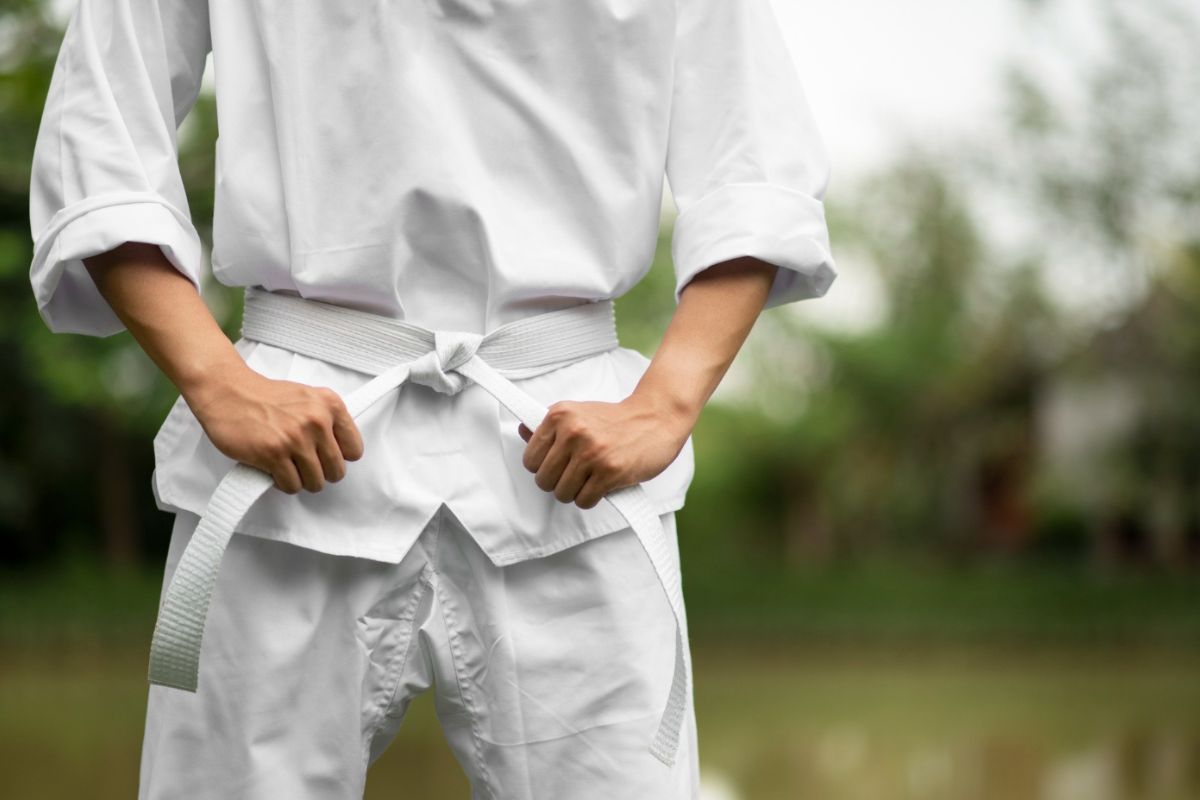
What You Need to Know to Get a White Belt in BJJ?
Once you get that white belt, you’re on your way to BJJ mastery. Unlike some other martial arts, where you may need to go through tests and grading to get the white belt, in BJJ, you usually get the white belt as soon as you join the academy (or school), and you don’t really need any skills or knowledge.
The white belt is where you start from – it’s an invitation to learn. This means that beginners of all ages, fitness levels, and martial arts experience (if any) are welcome with open arms into the community.
The real challenge starts after you get the belt and start learning about techniques, drills, and sparring. The process of getting the white belt is easy, but you’ll need to put in quite a bit of work to acquire the stripes.
How Many Stripes Could Be on a White Belt BJJ and How Quickly They Can be Obtained?
If you’re a newbie, you’re probably excited to get that white belt and to start your journey. However, you’ll soon realize that it’s not about the belt – it’s about the stripes. They show your progress and serve as a motivation for you to keep going and working.
Of course, you want to know what exactly you need to do in order to get the stripes. It can vary depending on the school and the instructor, but there are general requirements associated with each level.
Stripe 1
Think of the first stripe in BJJ as your initiation into the world of Brazilian Jiu Jitsu. Typically, you’ll need 2-4 months of consistent training for the 1 stripe BJJ white belt. At this level, your focus is on getting familiar with the foundational movements of BJJ and basic self-defense.
You’ll need to learn basic escapes (like the bridge and roll and shrimp escape), the closed guard position, and basic submissions, like the cross collar choke and the guillotine choke.
Stripe 2
By the time you’re eyeing your second stripe, you should have a firmer grasp on the basic techniques, and you should start refining them. For the 2 stripe white belt BJJ, you’ll need to master basic sweeps, like the scissor sweep, and submissions, including the armbar from the guard and the triangle choke.
As far as the timeframe goes, it should take about 3-6 months of training.
Stripe 3
At 3 stripe white belt BJJ level, you should be able to maintain good positions during sparring, while your transitions between submission attempts should be more fluid. Apart from transitions, this is also where your defensive skills need to shine, and you should be much more effective at countering your opponent’s moves.
You’ll need to master more advanced guard variations (like half guard and butterfly guard), side control maintenance and escapes, and more complex submissions, like the omoplata. You should also start chain-attacking.
Count on about 4-8 months of training.
Stripe 4
You’re almost at the top of your white belt journey, and it’s probably going to take about 6-10 months of training. This is where you should show some true proficiency in a broader range of techniques, be comfortable in various positions, and maybe even have a favorite technique.
You should master moves like the deep half guard, basic leg locks (like straight ankle locks), and more strategic plays, like baiting opponents or setting traps. You should also be good at escaping positions like the mount or back control.
Overall, by the time you get to, say, the third stripe, you should be comfortable performing techniques like the triangle choke or the kimura lock, but you may also be chaining these techniques and moving seamlessly from a failed armbar attempt into a triangle choke setup.
Keep in mind, these benchmarks vary from school to school, and the true essence of BJJ is in continuous learning and personal growth on the mat.
White Belt to Blue Belt BJJ
Receiving your white belt when you first start training is super exciting, but going from the white belt to the blue belt – multiply that excitement by at least 10.
This can take you anywhere from 1 to 2 years to do, although the time frame is different for everyone. It depends on the hours you spent on the mat, your aptitude, and the criteria that your academy sets.
The white belt is your foundation: you’re focusing on the basics, learning rudimentary escapes, understanding guard positions, and grasping the initial throws and submissions.
However, as you start getting closer to the blue belt, you’ll be expected to have some serious knowledge. You should be comfortable with more techniques, like more advanced sweeps, guard passes, and submissions. Your defensive skills should be sharper, and you should be able to fend off both your peers and newbies. Sparring (or “rolling”) will be less about survival and more about strategy, and you’ll need to get the chain techniques down as well as bait opponents and transition smoothly between techniques.
It may seem like a lot, but with consistent training and dedication (and a few bruises), you’ll get there faster than you think. The blue belt isn’t just something that shows your technical knowledge – it highlights your commitment, resilience, and perseverance.
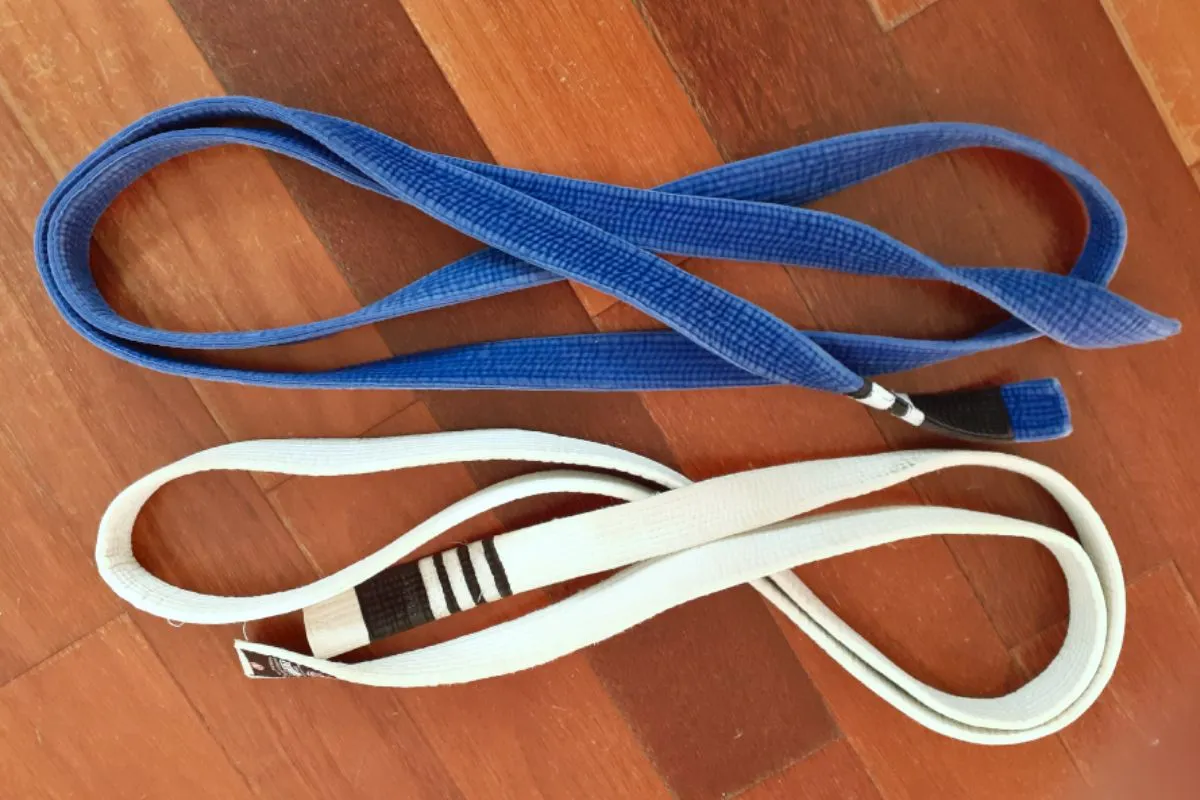
7 Tips for Getting the White Belt BJJ Stripes Fast
First of all, let’s get one very important thing straight – there are no shortcuts here and you shouldn’t look for any. The stripes are about dedication, sacrifice, and knowledge. And there is no magical way to get from here to there fast. And when you really think about it – do you even want a shortcut?
Would there be a point in belts and stripes if anyone could do it? Would you feel a sense of accomplishment if you cheated your way to your next stripe or your next belt? The answer to all of these is a big no. Nothing of value comes easy, and this journey will take a lot of time and resilience.
Still, there are a few strategies that can help your progress, so those stripes can find their way to your belt sooner. But don’t think of them as shortcuts – they’re just a way to get better faster.
1. Be Consistent
This may not be something you want to hear, but consistency is key. Simply put – the more you train, the faster you’ll move forward. Make your BJJ training part of your weekly routine and don’t skip your classes unless you absolutely have no other choice.
Consistency builds muscle memory, and if you want to master those techniques, this is a crucial aspect.
2. Active Sparring
Theory is great, and you need to have it down, but putting that theory into practice is even better, which is why active sparring is so important. Spar with people of various skill levels, as it will expose you to different styles and techniques.
3. Take Notes
You may not connect a notebook to martial arts training, but taking notes is very helpful. After you’re done with your class, take some time to jot down what you’ve learned. It will not only help you to memorize things but also allow you to revisit and refine the techniques you have been learning about.
4. Go to Seminars and Workshops
What better way to broaden your horizons than to learn from more than one instructor? If you attend seminars and workshops, you’ll be able to network with people who are interested in the same thing as you are and to get insight into new perspectives.
5. Ask for a Feedback
A lot of people don’t like criticism – don’t be one of them. Constructive criticism is one of the best ways to improve, so don’t be afraid to ask your instructor for some feedback.
6. Mental Preparation
It may come as a surprise, but this is a mental game as much as it is physical. Visualization and meditation can give you a deeper understanding of techniques and strategies and mentally prepare you for every session.
7. Additional Training
Don’t restrict yourself to just martial arts. Strength training and flexibility exercises are a great way to stay physically fit, which can give you an edge in sparring and during training. Research has also shown that those who included resistance training into their routine were generally stronger.
FAQ
What do the white belt stripes mean in Jiu Jitsu?
Simply put, white belt stripes highlight one’s progression. They show that the student has an understanding of the fundamental techniques and has improved their skills. Each stripe (usually ranging from 1 to 4 on a white belt) represents a step forward and serves as motivation. It gives the student short-term goals while they work towards their next belt.
How long does it take to get four stripes on a BJJ white belt?
The shortest answer is – it depends. Earning four stripes depends on how frequently you train, your BJJ white belt curriculum, and how well you’re progressing. For most people, it will be 1 to 2 years. Each stripe is usually a few months of consistent training and learning different techniques.
Conclusion
By now, you should be well aware of the fact that the stripes on white belt are so much more than a mere way to decorate it – they represent technical mastery and personal growth.
On the surface, white stripes show that you have mastered fundamental moves. However, they also highlight an immense amount of dedication, sweat, resilience and passion. And of course… You can’t get away without a few bruises, but they come with the territory.
Do you have anything to share? How did you feel when you earned your first stripe? What was the most challenging aspect of it? How often do you train? Who is the most influential person in your BJJ journey so far? How much training did it take you to become a one stripe white belt?
Leave your tips and comments and let’s help each other out!
References:
- Alan Toth, “The Science Behind Muscle Memory,” Stanford Medicine Scope, https://scopeblog.stanford.edu/2022/07/15/the-science-behind-muscle-memory/ (accessed Oct. 9, 2023).
- Christian G. Almeda, Gerald T. Mangine, Zackary H. Green, Yuri Feito, Duncan N. French, “Effects of Strength Training on Physical Fitness of Olympic Combat Sports Athletes: A Systematic Review,” MDPI, https://www.mdpi.com/2075-4663/11/1/13 (accessed Oct. 9, 2023).
- Izham Cid-Calfucura, Tomás Herrera-Valenzuela, Emerson Franchini, Coral Falco, Jorge Alvial-Moscoso, Carolina Pardo-Tamayo, Carolina Zapata-Huenullán, Alex Ojeda-Aravena, Pablo Valdés-Badilla, “Effects of Strength Training on Physical Fitness of Olympic Combat Sports Athletes: A Systematic Review,” MDPI, https://www.mdpi.com/1660-4601/20/4/3516 (accessed Oct. 9, 2023).
- “Meditation,” Cleveland Clinic, https://my.clevelandclinic.org/health/articles/17906-meditation (accessed Oct. 9, 2023).
- “Visualization,” American Psychological Association, https://dictionary.apa.org/visualization (accessed Oct. 9, 2023).
